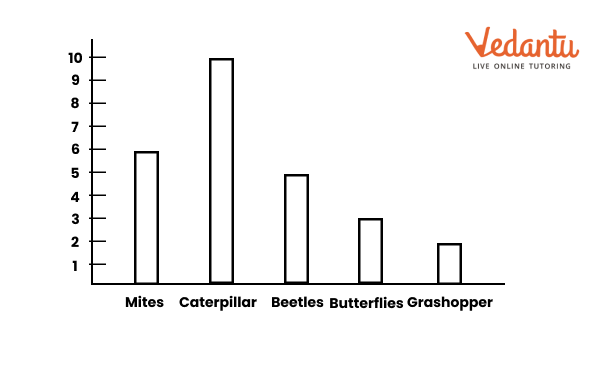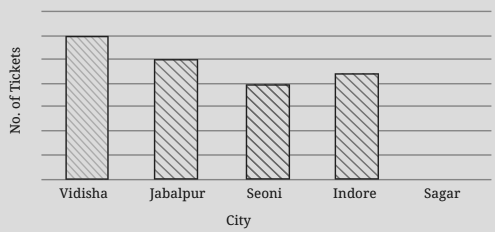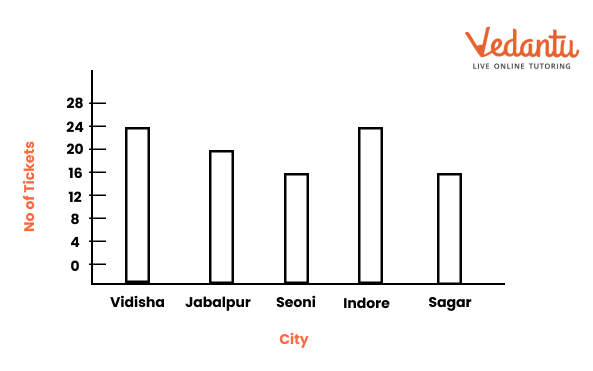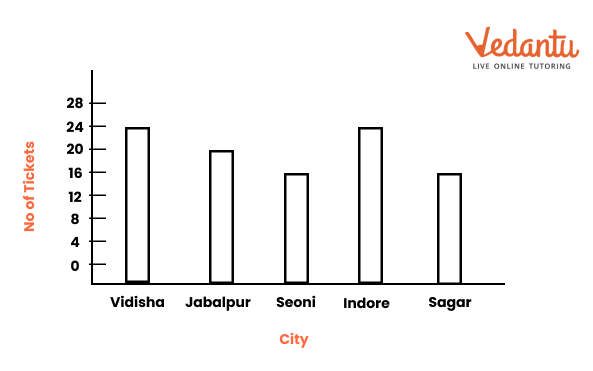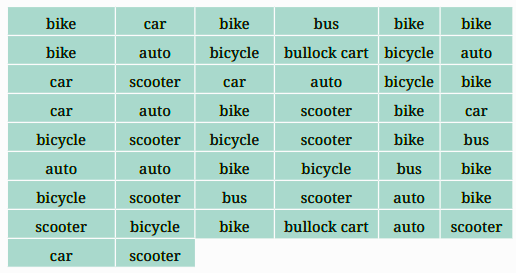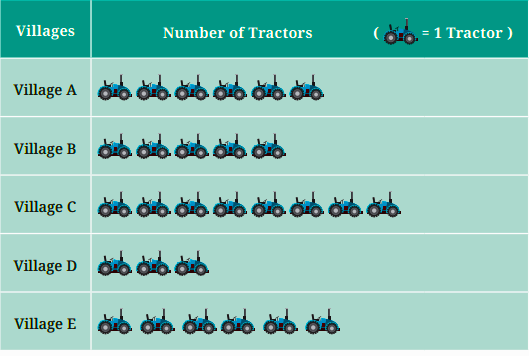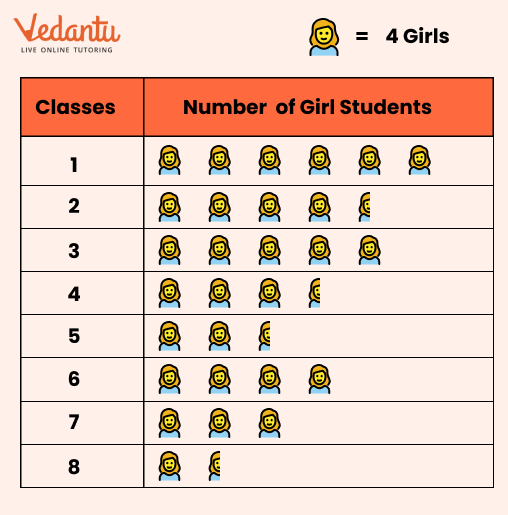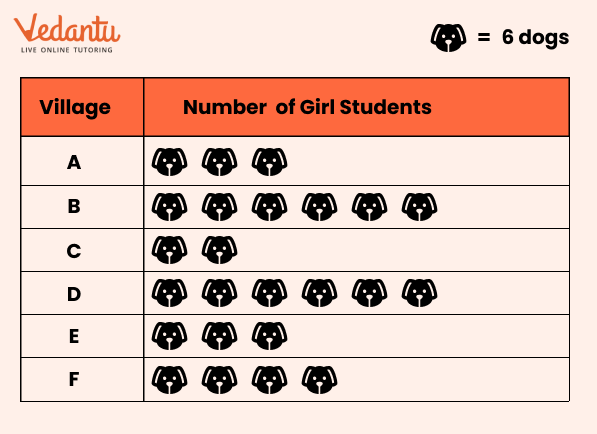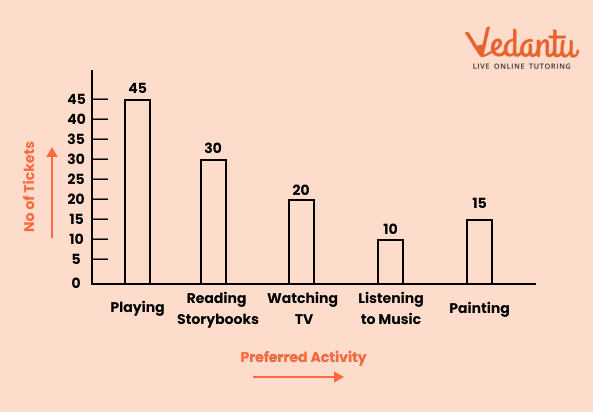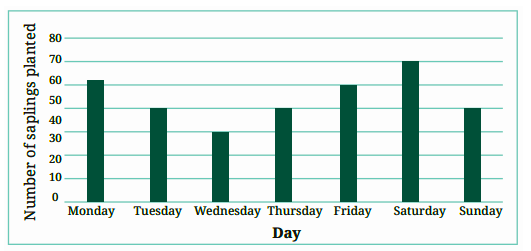NCERT Solutions For Class 6 Maths Chapter 4 Data Handling And Presentation Exercise 4.4 - 2025-26
FAQs on NCERT Solutions For Class 6 Maths Chapter 4 Data Handling And Presentation Exercise 4.4 - 2025-26
1. Where can I find the correct and detailed NCERT Solutions for Class 6 Maths Chapter 4 (Data Handling) for the 2025-26 session?
You can find comprehensive, step-by-step NCERT Solutions for Class 6 Maths Chapter 4, Data Handling And Presentation, on Vedantu. These solutions are prepared by subject experts and strictly follow the 2025-26 CBSE curriculum guidelines, ensuring you understand the correct method for every problem.
2. How do you correctly use tally marks to organise raw data as per the method in Chapter 4?
To correctly organise data using tally marks, follow these steps:
- Create a table with three columns: Category, Tally Marks, and Frequency (or Number).
- For each data point, draw one vertical line (|) in the Tally Marks column next to its corresponding category.
- For every fifth data point in a category, draw a diagonal line across the previous four vertical lines to form a group of 5.
- Finally, count the tally marks for each category and write the total number in the Frequency column.
3. What is the step-by-step process for interpreting a pictograph in the NCERT solutions?
The NCERT solutions guide you to interpret a pictograph with this method:
- First, carefully read the title of the pictograph to understand what data it represents.
- Next, look for the key, which tells you what each symbol or picture stands for (e.g., 1 symbol = 10 students).
- Count the number of symbols for each category.
- Multiply the number of symbols by the value given in the key to find the actual value for each category.
4. What is the first step when asked to draw a bar graph for a given set of data in Chapter 4?
The first and most crucial step is to draw and label the two axes. Draw a horizontal axis (x-axis) and a vertical axis (y-axis). The x-axis is used to represent the different categories (like subjects, days, or items), while the y-axis represents the numerical values or frequencies.
5. How do you decide on a suitable scale for a bar graph, as explained in the NCERT solutions?
To decide on a suitable scale for a bar graph, first look at the highest value in your data. Choose a scale that allows this highest value to fit comfortably on the graph paper. For example, if your highest value is 85, a scale of 1 unit = 10 marks would be appropriate. The scale must be consistent along the entire axis.
6. What are the common mistakes to avoid when solving questions from Chapter 4, Data Handling And Presentation?
When solving problems from this chapter, students often make these mistakes:
- Forgetting to write the title of the graph or a key for a pictograph.
- Choosing an inappropriate scale for a bar graph, making it too small or too large.
- Drawing bars of unequal width or with uneven spacing between them.
- Miscounting tally marks, especially when dealing with large sets of data.
7. Why is it important to create a frequency table before drawing a bar graph?
Creating a frequency distribution table (often using tally marks) before drawing a bar graph is a critical step because it organises raw, unsorted data into a structured format. This table clearly shows each category and its corresponding numerical value (frequency), which directly translates to the height of each bar, ensuring accuracy and making the graph-drawing process much simpler and less prone to errors.
8. How do the NCERT solutions for Chapter 4 explain the difference in solving methods for a pictograph and a bar graph?
The solutions demonstrate that while both are graphical representations, the method differs. For a pictograph, the solution involves using symbols based on a key to represent data. For a bar graph, the solution requires drawing rectangular bars of uniform width where the height corresponds to the exact value, demanding the use of a proper scale on an axis.
9. What topics are covered in the NCERT Solutions for Class 6 Maths Chapter 4?
The NCERT Solutions for Class 6 Maths Chapter 4, Data Handling And Presentation, cover all key concepts from the CBSE 2025-26 syllabus. This includes step-by-step methods for:
- Collecting and organising data.
- Representing data using tally marks and frequency tables.
- Interpreting and creating pictographs.
- Understanding, interpreting, and drawing bar graphs with appropriate scales.




















